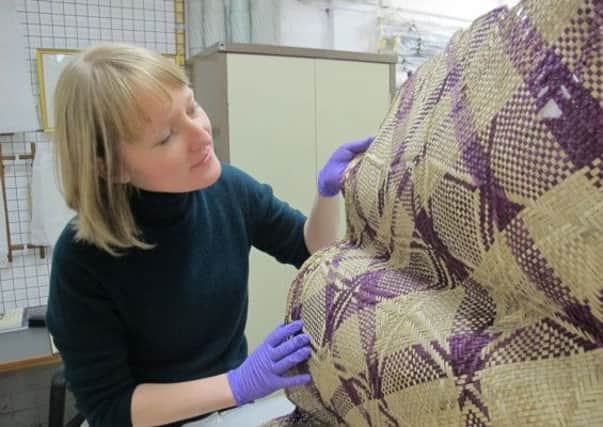Comment: Dip into our museums’ Pacific collections


National Museums Scotland has recently launched online resources relating to Scottish museum collections from the Pacific, which includes the broad cultural areas of Polynesia, Melanesia and Micronesia.
This was the culmination of a partnership project that began in April 2013 and aimed to explore material from Pacific islands, while developing an innovative approach for the sharing of knowledge between a new curator, current collections staff and subject experts.
Advertisement
Hide AdAdvertisement
Hide AdSupported by the Museums Association Esmée Fairbairn Collections Fund, the project brought together four core partner museums: National Museums Scotland; Perth Museum and Art Gallery; Glasgow Museums; and Aberdeen University Museums.
As project curator, I conducted a collections review of more than 10,000 objects, drawing out stories behind some of the artefacts and looking at connections. The project team have collaborated with other national and international museums, researchers, and Pacific Island communities. The Pacific material at the four partner museums spans the late 18th century to the present. The review highlighted that most objects date from the mid-19th and early 20th centuries, and that the largest proportion of artefacts are from Melanesia. This reflects the reach of the British Empire and the working lives of Scots across the world over the past 200 years.
National Museums Scotland has a large collection from right across the Pacific, with its beginnings in the Society of Antiquaries of Scotland, the University of Edinburgh, the Natural History Museum and the Royal Society of Edinburgh. It houses items gathered during Captain James Cook’s second and third voyages of 1772-1775 and 1776-1779. The review led to further research on another early voyage, that of HMS Blossom (1825-28). Commanded by Captain Frederick Beechey, this brought objects to the museum from the Tuamotu group, a tiny archipelago in the eastern Pacific Ocean.
Perth Museum and Art Gallery’s Pacific collection is connected to the Literary and Antiquarian Society of Perth, founded in 1784. Perth has a complete Tahitian mourner’s costume as well as a carved drum and an unusual bow, quiver, and arrows from the Society Islands, French Polynesia. A Maori cloak fully covered with feathers from the kakapo, or night parrot, is the only one known to exist in the world. Both the Society Islands material and significant Maori items were given in 1842 by David Ramsay, a Perth-born ship’s surgeon who travelled to Australia.
Part of Aberdeen University Museums’ Pacific collection is connected with Aberdonian families involved with the government of Fiji in the late 19th and early 20th centuries. This includes material from the period 1875-1880, when Sir Arthur Gordon was the first British governor of Fiji, as well as a collection from Aberdeen graduate Colonel William Allardyce, the seventh governor, from 1901-2. The earlier material came via Sir Arthur’s private secretary Arthur JL Gordon and his Medical Officer Sir William MacGregor.
Glasgow Museums’ broad collection includes a group of artefacts from the Torres Straits Islands brought to Scotland by Robert Bruce, a Glaswegian boat builder and ship’s captain for the London Missionary Society. He lived on the islands of Mer (Murray Island) and Saibai from 1881-9. Both Robert and his brother, John ‘Jack’ Bruce, were acquaintances of the Cambridge anthropologist and museum curator, Alfred Cort Haddon, and acted as intermediaries through whom Haddon gathered information and material. This collection – which includes two unique and highly significant ceremonial posts (zogo baur) – is unrivalled within Scottish institutions and held in high esteem by Torres Strait Islanders today. Complementing the collection, the museum has four works by contemporary Torres Strait Islander artist Alick Tipoti. Working in collaboration has also enabled the exploration of connections between different collections and highlighted potential for future partnership work. Some cross-collection strengths shed new light on Scots in the Pacific. For example, from the beginning of the project we were aware that each of the partner museums hold objects from Vanuatu connected with Scottish Presbyterian missionaries who lived on the southern islands from the 1840s-1940s. The review also highlighted that some particularly Scottish artefacts such as communion tokens were produced and taken to the Pacific for use in Presbyterian mission work.
Detailed findings from the review along with an introductory guide to working with Pacific collections are now available online. It is hoped through these comprehensive resources that the project’s legacy will be the facilitation of future research and interest in these important collections in Scotland both nationally and internationally.
• Eve Haddow is assistant curator, Pacific Collections Review, National Museums Scotland. Find out more and view the project blog: nms.ac.uk/pacific
SEE ALSO